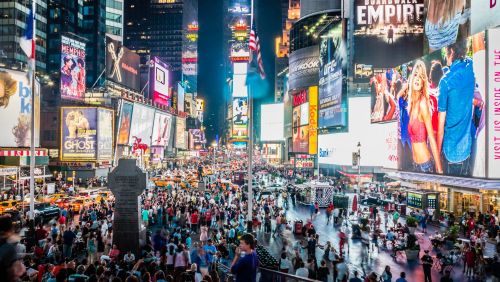An Urban Pandemic Becomes an Urban Sprawl Pandemic

Examples around the world make clear that density—whether low or high—is no excuse when it comes to the appalling number of COVID-19 cases facing the United States.
The density red herring
The rising number of COVID-19 cases nationwide provides an opportunity to re-examine assumptions about the virus’s relationship to city life.
After coronavirus hit New York City in March, commentators and political leaders quickly identified the city itself as the culprit. Density, the feature that set New York apart from every other place in the US, now—apparently—set it apart as the world's biggest coronavirus hotspot. "Density is New York City's big 'enemy' in the coronavirus fight," declared The New York Times. Governor Andrew Cuomo, seeking to get a handle on an out-of-control situation, ordered Mayor Bill DeBlasio to develop a plan to "reduce density." Sprawl was celebrated. "In the COVID-19 pandemic," wrote geographer Joel Kotkin about Los Angeles, "our much-maligned dispersed pattern"—sprawl—"has proven a major asset."
There was never much evidence to support these claims. Though New York City suffered enormous losses, dense places were not uniquely susceptible to coronavirus, and many avoided large outbreaks altogether. Assumptions about the dangers of public transit turned out to be premature. Density could even offer advantages in a pandemic, such as the ability to concentrate resources and support "social infrastructure" to meet residents' needs.
The density red herring distorted Americans' understanding of the COVID-19 danger, giving sparsely populated places a false sense of security. When Alabama Governor Kay Ivey declined to implement a stay-at-home order in her state, she alluded to the city's rural character as a COVID bulwark, noting, "We are not New York."
Now in late June, Alabama is still not New York. New York's cases have fallen precipitously; Alabama's are rising, with more new cases reported daily than New York State, despite having one quarter the population. Dense cities such as New York City, Chicago, and Washington, DC, have seen a similar drop in cases. Indeed, most of the states at the center of the recent COVID-19 boom have few, if any, dense cities: Idaho, Montana, South Carolina. Some places seeing a sharp uptick, such as Texas, Florida, Arizona, are models of sunbelt decentralization. And Los Angeles County, a paragon of supposedly salubrious sprawl, now has the most cases of any county in the United States.
To put it in global terms: as of June 26th, Wyoming, population 580,000, had reported three times as many COVID-19 deaths as Hong Kong, population 7.5 million, and with a population density almost 3,000 times greater.
The myth that density is coronavirus destiny should be recognized for what it is: a myth. Density does pose certain challenges – more opportunities for crowding, the potential for more interactions with infected people—which other cities have shown to be surmountable. As the current wave of infections shows, rural and sprawling places have challenges of their own: limited healthcare capacity, difficulty reaching dispersed populations, crowded workplaces with few provisions for worker safety, and the false confidence of being outside the dirty, dangerous city.
Why, then, has the myth of urban vulnerability to the pandemic gained such traction?
First, many cities in the United States did experience large numbers of cases early in the pandemic. New York City, the biggest, densest place in the US and also home to much of its media apparatus, had more cases than any place on earth. Though suburbs such as New Rochelle, New York, and Everett, Washington, were among the first hotspots, New York City generated outsized attention.
Second, for political leaders, the idea that density caused cities' high numbers of cases served a useful purpose, absolving them from responsibility for the crisis. Every death blamed on "wholly inappropriate density," as Gov. Cuomo called it, was a death that didn't result from a blundering public health response, or racial inequities exacerbated by policy, or housing markets that jammed vulnerable residents into crowded apartments.
Finally, the narrative of urban danger and disease fed into a powerful trope dating to the heyday of urbanization in the United States: that urban spaces are damaging to the health and morals of residents, an idea I explored in CityLab in April. This belief, dating to the late nineteenth century, endured in various forms through the twentieth century and remains resonant today.
But the current rise in COVID-19 cases should be a reminder of the limits of environmental determinism. Dense places and sprawling ones pose unique challenges when it comes to a pandemic, but both are vulnerable. Examples around the world make clear that density—whether low or high—is no excuse when it comes to the appalling number of cases facing the United States.
Better to focus on the things that matter: how to act to save lives, how to address the factors that actually do put people at risk—chief among them racial inequities—and, more broadly, how to make the places in which we live more resilient in the wake of the current catastrophe.

